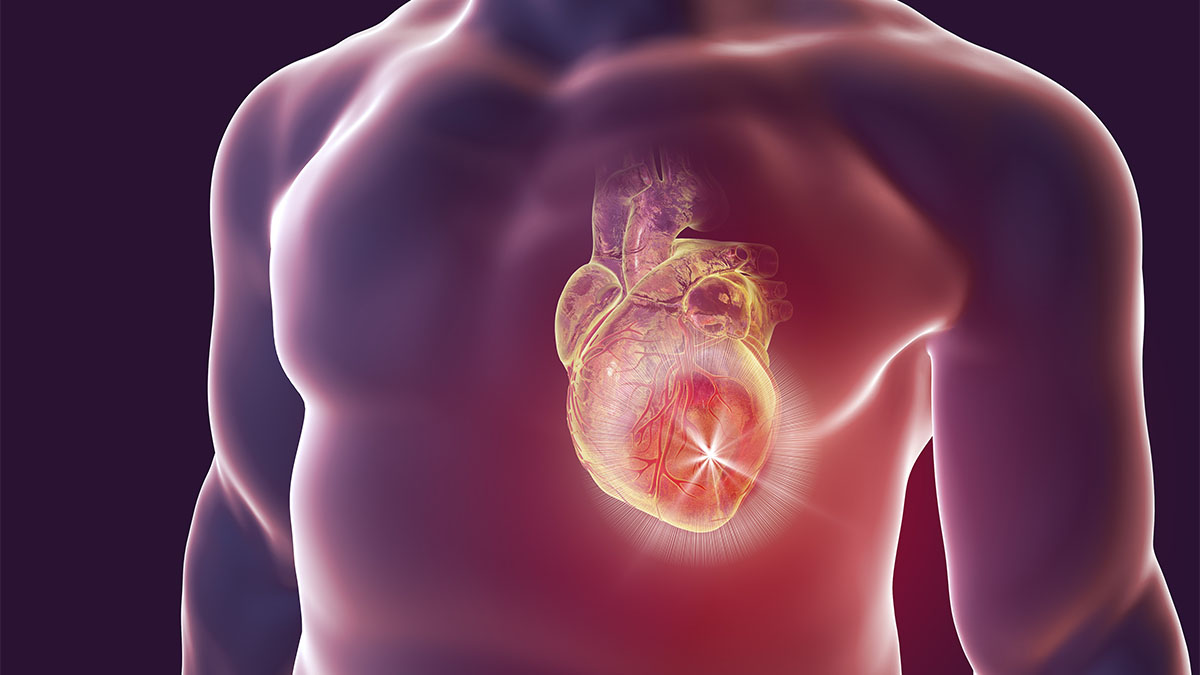COVID-19-related myocarditis more likely to target younger adults

Myocarditis is a relatively common heart disease that can occur in all age groups, but it is relatively more common in young people.
Young people rarely have coronary heart disease and other common heart diseases. Therefore, myocarditis is one of the main heart diseases that affect the health of young people.
The novel coronavirus is still prevalent in the United States and other countries, seriously endangering the health of the general public.
This article aims to briefly discuss the relationship between the new coronavirus and myocarditis and related diagnosis and treatment countermeasures
1. What is myocarditis?
Myocarditis refers to localized or diffuse acute or chronic inflammatory lesions of the myocardium. The main pathological changes are inflammatory cell infiltration, myocardial cell injury, necrosis, and fibrosis.
There are many reasons for myocarditis, the most common of which is viral infection.
Common symptoms of myocarditis include chest pain, fatigue, palpitation, shortness of breath, syncope, and edema; electrocardiogram and myocardial examination can show myocardial damage, and echocardiography can show abnormal myocardial movement and decreased contractility; the best way to diagnose myocarditis is cardiac MRI and endomyocardial biopsy.
Myocarditis not only has different causes, but also has different clinical manifestations and results.
2. Myocarditis associated with the new coronavirus
There are three types of myocarditis associated with SARS-CoV-2 infection: myocarditis caused by SARS-CoV-2, namely SARS-CoV-2 myocarditis, myocarditis associated with SARS-CoV-induced multisystem inflammatory syndrome, and myocarditis caused by mRNA COVID-19 vaccine.
(1) New coronavirus myocarditis
As early as the first half of 2021, the United States collected data from more than 900 hospitals and found that the incidence of myocarditis in hospitalized patients with new crown infection was 16 times that of non-new crown hospitalized patients.
According to data from the US CDC at the beginning of this year: the new crown virus can cause myocarditis in people of all ages. The number of males per 100,000 people is: 12.6-17.6 for 5-11 years old, 50-64.9 for 12-17 years old, 55.3-100.6 people aged 18-29, 57.7-114 people aged over 30; the incidence rate of women is significantly lower than that of men, and there is little change in each age group, ranging from 11.9-61.7/100,000.
There are also many clinical reports of acute fulminant myocarditis caused by new coronavirus infection, especially in the early stage of the new crown epidemic, myocarditis is one of the main causes of death from the new crown.
Fortunately, compared with the original new coronavirus and the Delta variant, the incidence and severity of myocarditis caused by the currently popular Omicron variant may be significantly lower, and no relevant statistics have been seen so far. Data and clinical reports.
The new coronavirus myocarditis that my colleagues and I have seen in the clinic is also significantly less than before.
(2) Myocarditis associated with the multisystem inflammatory syndrome caused by the new crown
New crown infection can cause multi-system inflammatory syndrome, which usually occurs 2-4 weeks after infection, and is more common in adolescents under the age of 21.
Its main clinical manifestations are fever and multiple organ damage symptoms, and it is one of the main causes of severe illness and death in adolescents.
Its pathogenesis may be related to the hypersensitivity reaction caused by the new crown infection.
The clinical manifestations of multisystem inflammatory syndrome caused by new crown infection are similar to those of Kawasaki Disease. More than 50% of patients have cardiac symptoms, mainly myocarditis and coronary artery dilation or tumor-like changes.
Diagnostic methods mainly include electrocardiography, myocardial enzymes, and echocardiography.
The triple therapy of immunoglobulin, hormone and aspirin has good effect and prognosis.
The data of CDC of the United States shows that the incidence of multisystem inflammatory syndrome caused by Alpha (Alpha) and delta variants is 54.5/100,000 and 49.2/100,000 respectively. It is only 3.8/100,000, which is 14 and 13 times lower than the former.
I have consulted and treated 15 patients with myocarditis related to multisystem inflammatory syndrome (http://t.cn/A6K8RPx8) before the epidemic of Omiclon, but since the epidemic of Omiclon, I have not yet consulted on this Class patients.
3. COVID-19 Infection and Movement
If a person infected with the new crown is asymptomatic or only has mild symptoms, physical exercise or sports can be resumed after the infection turns negative and the symptoms improve.
Mild disease refers to only upper respiratory symptoms, no dyspnea, and normal blood oxygen saturation.
If the patient has more than mild symptoms or multi-system inflammatory syndrome, a cardiac examination is required before resuming sports, including physical examination, myocardial enzymes, electrocardiogram, and echocardiogram.
If there is no abnormality, sports activities can be resumed; if abnormalities are found, exercise tests, dynamic electrocardiograms and cardiac MRI examinations are required, and normal patients can resume sports activities.
Regardless of myocarditis caused by the new coronavirus, myocarditis associated with multisystem inflammatory syndrome, or vaccine-induced myocarditis, patients need to prohibit sports for 3-6 months.
To sum up, SARS-CoV-2 infection is closely related to myocarditis, which can not only directly cause myocarditis, but also lead to myocarditis related to multisystem inflammatory syndrome.
If it can be diagnosed and treated early, the vast majority of patients with new crown-related myocarditis will have a good prognosis, and very few will need heart transplantation or die.
However, myocarditis caused by Omeclone may have a lower incidence, milder symptoms, and better prognosis, and further observation is needed.
